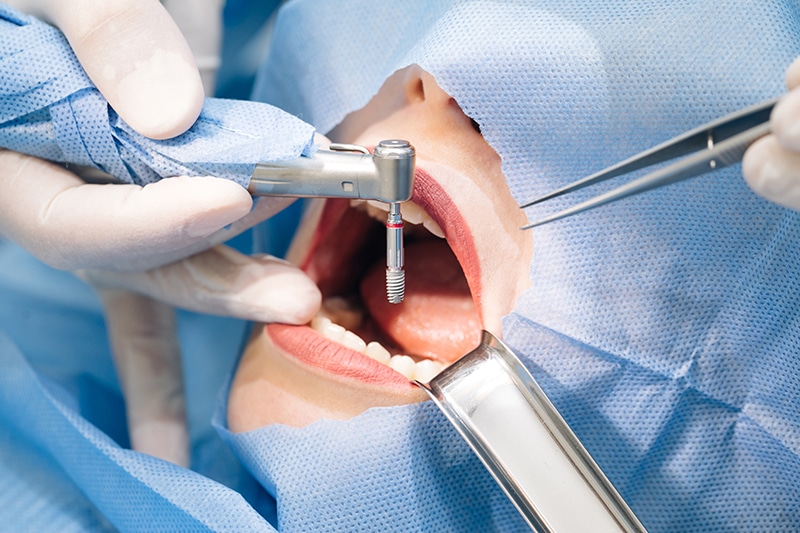For dental practitioners, using the appropriate ICD-10 codes to properly identify and document common dental issues is crucial for not only getting paid for the services provided, but also to maintain the integrity of the patient’s medical record. Partnering with an experienced and knowledgeable dental billing company is an effective way to ensure thorough documentation of patients’ dental status and the treatments they receive.
Ten Common Dental Conditions and Their ICD-10 Codes
Having a thorough understanding of the relevant ICD-10 codes is crucial for accurate dental billing and ensuring appropriate reimbursement from insurance companies. Here are 10 common dental conditions and their ICD-10 codes:
- Dental Caries
Dental caries or decay is one of the most common conditions that dental practitioners treat. This chronic disease is caused by bacteria in the mouth that feed on sugars and produce acid which gradually erodes the tooth structure over time. Dental caries is diagnosed using a variety of methods, including visual, tactile, and radiographic examinations. An active caries lesion is one that is considered to be progressive. Arrested caries, also known as inactive caries, are areas of dental decay that have stopped progressing.
K02 Dental caries
K02.3 Arrested dental caries
K02.5 Dental caries on pit and fissure surface
K02.51 Dental caries on pit and fissure surface, limited to enamel
K02.52 Dental caries on pit and fissure surface, penetrating into dentin
K02.53 Dental caries on pit and fissure surface, penetrating into pulp
K02.6 Dental caries on smooth surface
K02.61 Dental caries on smooth surface, limited to enamel
K02.62 Dental caries on smooth surface, penetrating into dentin
K02.63 Dental caries on smooth surface, penetrating into pulp
K02.7 Dental root caries
K02.9 Dental caries, unspecified
Treatment depends on the stage of decay and the condition of the tooth, and include fluoride application, fillings, crowns, root canals, and extraction.
- Halitosis
Halitosis refers to offensive, foul breath odor. Bad breath can be caused by various factors, from poor oral hygiene, gum disease, dry mouth or cavities from eating certain foods and smoking.
R19. 6 Halitosis
- Gingivitis
Gingivitis is a mild form of periodontal disease that often arises from inadequate brushing and flossing, though it can also be triggered by medical conditions or certain medications. Key symptoms include swollen, soft, and reddish-purple gums that are tender and may bleed easily. The presence of plaque and tartar at the base of the teeth is also common. Gingivitis can lead to gum recession, where the gums pull away from the teeth. Diagnosing gingivitis involves a thorough review of the patient’s dental and medical history, as well as any conditions that might contribute to their symptoms.
K05.0 Acute gingivitis
K05.00 Acute gingivitis, plaque induced
K05.01 Acute gingivitis, non-plaque induced
K05.1 Chronic gingivitis
K05.10 Chronic gingivitis, plaque induced
K05.11 Chronic gingivitis, non-plaque induced
Treatment includes cleaning of the teeth to remove harmful bacteria, plaque and tartar, scaling and root planing, and dental work repair.
- Gingival Recession
Gingival recession occurs when the gingival or gum tissue pulls away from the teeth, exposing the roots. It can be caused by brushing too hard or too long as well as by factors such as genetics, smoking, alcohol consumption, diabetes, certain medications, and hormonal changes. This condition can cause increased sensitivity, an unattractive appearance, and an increased risk of tooth decay and other periodontal problems. Gum recession can be detected during a routine examination and a periodontal probe will be used to measure the amount of gum recession on each tooth.
K06. 0 Gingival recession
K06.01 Gingival recession, localized
K06.02 Gingival recession, generalized
Treatment may include improved oral hygiene, gum grafting surgery, or other periodontal procedure.
- Periodontitis
A severe gum infection, periodontitis can lead to tooth loss, bone loss and other serious health complications. Symptoms include red, bleeding or swollen gums. Diagnosing the condition and evaluating its severity involves medical history review, oral exams, measuring the depth of the pockets between the gums and the teeth (pockets deeper than 4 mm may indicate periodontitis) and dental X-rays.
K05.30 Chronic periodontitis
K05.311 Chronic periodontitis, localized, slight
K05.312 Chronic periodontitis, localized, moderate
K05.313 Chronic periodontitis, localized, severe
K05.319 Chronic periodontitis, localized, unspecified severity
K05.32 Chronic periodontitis, generalized
K05.321 Chronic periodontitis, generalized, slight
K05.322 Chronic periodontitis, generalized, moderate
K05.323 Chronic periodontitis, generalized, severe
K05.329 Chronic periodontitis, generalized, unspecified severity
K05.2 Aggressive periodontitis
K05.21 Aggressive periodontitis, localized
K05.22 Aggressive periodontitis, generalized
Treatment includes but is not limited to scaling and root planing, pocket reduction procedures, soft tissue grafts, and ongoing maintenance and monitoring.
- Pulpitis
Pulpitis is an inflammation of the tooth’s pulp, the soft inner layer of the tooth. Common causes of pulpitis include untreated dental caries (cavities), dental trauma, or multiple restorations (fillings). Typical symptoms of pulpitis include pain, sensitivity to hot or cold temperatures, and tingling sensations in the affected tooth. Diagnosis is based on clinical findings, as well as the results of x-rays and pulp vitality tests. In its early stages, pulpitis is considered reversible.
K04.0 Pulpitis
K04.01 Reversible pulpitis
K04.02 Irreversible pulpitis
K04.1 Necrosis of the pulp
Reversible pulpitis can be treated with a filling while irreversible pulpitis may require a root canal or tooth extraction.
- Temporomandibular Joint Disorders
Temporomandibular Joint Disorder (TMJD) refers to a group of conditions affecting the temporomandibular joint, which connects the jawbone to the skull. Symptoms can include jaw pain, difficulty chewing, clicking or popping sounds when moving the jaw, and headaches. TMJD can result from jaw injury, arthritis, or teeth grinding. Diagnosis typically involves a physical examination and patient history,
M26.6 Temporomandibular Joint Disorders
M26.601 Right temporomandibular joint disorder, unspecified
M26.602 Left temporomandibular joint disorder, unspecified
M26.603 Bilateral temporomandibular joint disorder, unspecified
M26.609 Unspecified temporomandibular joint disorder, unspecified side
M26.61 Adhesions and ankylosis of temporomandibular joint
M26.62 Arthralgia of temporomandibular joint
M26.63 Articular disc disorder of temporomandibular joint
M26.69 Other specified disorders of temporomandibular joint
Treatment may include pain management, dental splints, or physical therapy.
- Mouth Sores
Mouth sores, ulcers, or discolored patches or lesions of the oral mucosa are abnormal changes or areas in the lining of the mouth. These lesions may be caused by a variety of factors, including infections (such as viral or fungal), trauma, allergic reactions, or systemic conditions (like autoimmune diseases). Common types include canker sores, cold sores, and leukoplakia. Diagnosis typically involves a clinical examination, patient history, and sometimes biopsy to determine the underlying cause.
K13. 70 Unspecified lesions of oral mucosa
K13.79 Other lesions of oral mucosa
Treatment depends on the lesion’s cause and may include medications, lifestyle changes, or surgical intervention.
- Tooth Erosion
Erosion is the loss of tooth enamel due to chemical processes rather than mechanical wear. Typical causes include exposure to acidic substances, such as those found in citrus fruits, carbonated drinks, or stomach acid from acid reflux or bulimia. Sensitivity, discoloration, and a smooth, shiny appearance on the tooth surfaces are the common symptoms. As enamel wears away, teeth may become more susceptible to decay and damage. Diagnosis involves a dental examination and history of dietary and medical habits.
K03.2 Erosion of teeth
Treatment focuses on reducing acid exposure, improving oral hygiene, and using fluoride or dental restorations to protect and repair the affected teeth.
- Deposits [accretions] on teeth
Accretions on teeth refer to accumulations of material such as plaque, dental cement, or calculus on the tooth’s surface. Causes range from certain foods or medicines, smoking and color pigments to infections, hereditary diseases, and nutritional deficiencies. Plaque forms on teeth and can harden into tartar if not removed through regular brushing and flossing. Tartar is a hardened deposit that requires professional dental cleaning to remove.
K03.6 Deposits [accretions] on teeth
If left untreated, plaque and tartar can lead to gum infections, cavities, tooth decay, tooth loss, and abscessed teeth.
Outsource Dental Billing to Ensure Accurate Documentation
Understanding ICD-10 codes for common dental conditions is crucial for accurate documentation and efficient dental billing services. Proper coding ensures that claims are processed smoothly, reducing the risk of denials and delays. By staying informed about the latest codes and practices, dental professionals can streamline their billing processes and focus more on providing quality care to their patients.
Don’t let billing challenges hold you back.
Get paid what you deserve faster with our dental billing services.




